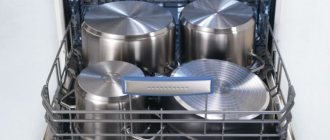During the operation of the car, various parts, elements of the chassis and body are subject to corrosion. Battery terminals are no exception, which often become covered with plaque after some time. This occurs due to poor contact between connections and exposure to aggressive substances. White deposits and rust on the battery contacts prevent normal operation of the battery. In some cases, the battery is poorly charged from the generator and cannot start the engine.
When this problem occurs, it is important to find the cause and eliminate it. In addition, it is necessary to clean the electrical contacts and tighten the connections. It is important to do this in a gentle way so as not to harm the integral structure of the car’s electricity source.
Do you need to wash your car battery?
In this article, I want to tell you how to wash a car battery correctly and why it should be done regularly.
I didn’t remove the battery from the car; I have an almost dead battery in the garage, but that’s not the point; it’s just right for our experiment.
First, let's measure the leakage current on the battery; to do this, take a simple multimeter and set it to 20 Volt mode. Its full voltage, which it now produces, is only 1.89 volts.
Now we leave one probe from the multimeter on the battery terminal, on any terminal, it can be on the minus, it can be on the plus, and we move the other probe along the entire body of the battery and we see that the multimeter still shows the voltage anywhere, this is a current leak. Try to do this on your battery and you will see for yourself, and then you will wonder - why is my battery draining?
Now let's look at how easy it is to get rid of it.
So, we need any container to put the battery in.
Then pour half a bucket of water and pour three tablespoons of baking soda into it, mix everything well.
Why baking soda you ask, because baking soda neutralizes the electrolyte of the battery.
Next, take a simple cloth, soak it in this water and wipe and wash the battery.
We wipe thoroughly, in all hard-to-reach places, and don’t forget about the bottom of the battery.
Then you need to unscrew the filler plugs, if you have them, and rinse them very thoroughly, I took a brush for this purpose, it is very convenient to wash.
Don't forget to wash the rim on the battery where the plug is screwed in.
Well, we’ve cleaned up our battery, now let’s do a test measurement, take our multimeter again, set it to 20 Volts and measure.
It shows zeros everywhere...
Therefore, dear car enthusiasts, do not be lazy to wash your battery, the more often you wash it, the longer it will serve you and the less you will have to charge it. Thank you for your attention and have a smooth road everyone.
Source
How long does it take to charge the battery after replacing the electrolyte?
The battery should be charged 4 days after the fluid is renewed. You must use a special device that produces a current of 12 V. As for the voltage, it should not exceed 0.1 ampere.
The charging duration depends on the final values:
- each bank must have at least 2.4 V;
- at the terminals - at least 13 V.
Remember that you cannot dispose of old electrolyte into reservoirs, sewers, or simply pour it onto the ground. The acid must first be neutralized. If you do not have knowledge in this area, it is recommended that replacement be carried out by qualified services.
Gentle cleaning methods
Many motorists have empirically found the most effective ways to clean battery terminals. It does not require any special physical effort. This problem can be solved with the help of improvised materials, household chemicals and even medicines.
Soda
When using a car over time, the terminals are corroded by the electrolyte that gets on them. This promotes the formation of rust and sulfates on the surface of the joints. To get rid of acid residues, it is recommended to use a soda solution, for the preparation of which you need to dissolve a tablespoon of soda in a glass of warm water.
You need to treat the terminals with a rag soaked in soda solution, and then wipe them dry. To remove copper sulfate, you will need a baking soda solution and a stiff brush.
Here it is important to generously treat the contacts with liquid, and then carefully brush the surfaces.
This procedure must be carried out in the following order:
Apply a small amount of Vaseline or other protective lubricant, connect the positive terminal first, and then the negative terminal.
Sandpaper, wire brush
White deposits on battery terminals are lead that has oxidized. To ensure better electrical conductivity, it is better to clean the metal of all oxides. In this case, a mechanical method is suitable. For this you will need regular coarse sandpaper.
To clean the battery contacts and terminals, you need to turn off the engine and disconnect the contacts. It is advisable to remove the key from the ignition switch.
The cleaning procedure itself is simple. You just need to clean the battery poles and terminals until they are shiny.
Gasoline
This method should be used with extreme caution, since gasoline, if it comes into contact with rubber or plastic elements, can corrode them. On the other hand, this type of automobile fuel copes well with oxides, destroying them to metal.
Here you need to soak a rag well and carefully rub the terminals and contacts of the battery until traces of corrosion and white deposits are completely removed.
The methods described above are the most effective and simple. Even a novice motorist can solve the problem using one of these methods.
It should be remembered that the popular WD-40 product is not very suitable here, since this composition contains conductive substances of an unknown nature. You also need to be careful when using acetone. This solvent even destroys metals.
Let's sum it up
As you can see, when servicing the battery, the battery terminal is the element that needs to be given special attention. In fact, precisely because of the oxidation of the terminals, even serviceable batteries can discharge on their own, poorly accumulate charge from the generator, have difficulty starting the engine, etc. Moreover, without cleaning, even attempts to charge the battery with external chargers may not give the expected result.
We also recommend reading the article on how to lubricate battery terminals. From this article you will learn why terminal lubrication is needed, as well as which lubricant is best to lubricate battery terminals.
The reason is that a fully charged battery after an active discharge when starting the internal combustion engine will not be able to renew the expended energy in full, even if the generator provides normal charging. As a result, problems with the battery will begin again after a short period of time without cleaning and lubricating the terminals.
For this reason, the information given above allows us to completely eliminate not the result of the problem itself, but its source, which is the oxidized terminals of the car battery. Also, correct selection and application of protective lubricant to the battery terminals will avoid the occurrence of similar malfunctions in the future and significantly extend the service life of the battery.
Prevention of oxidation
To prevent oxidation, it is better to use copper compression terminals as they provide maximum contact strength. In addition, the appearance of plaque and rust depends on the condition of the battery. It is advisable to avoid undercharging or overcharging.
The most popular preventive method by which you can solve the problem of terminal oxidation is the use of various lubricants.
Solid oil, lithol
Solid lubricants have long been used to protect terminals from the aggressive effects of environmental particles. These substances do not conduct electricity. Under the influence of high temperatures, the contact gaps expand, opening the way for these lubricants to penetrate there. They harden over time, so it is recommended to completely replace them about twice a year.
Silicone Grease
In its pure form, this substance is ideal for protecting any electrical connections. It repels aggressive environmental particles. It is important to focus on the composition of a specific lubricant. No conductive additives should be present here. The main disadvantage of this product is its fluidity, so the lubricant must be updated periodically.
Products for treating battery terminals
On the huge automotive chemicals market you can find many compounds that are specifically designed to treat and protect battery terminals. Here, right on the tubes, detailed instructions for use are offered. This product should be applied to clean surfaces of the battery contacts. This is the most acceptable reliable option for protecting battery terminals and poles.
Like any element of a modern car, the battery requires periodic maintenance and proper operation. Cleaning the battery terminals is one of the most important procedures, along with monitoring the charging system and looking for electrical leaks.
Source
Types of batteries
All types of batteries are miniature power plants that supply energy to the electrical system of automobile transport. Despite the many modifications, they can be divided into 2 main groups:
- Service. There are not many such batteries to be found on the market, as they require careful care. However, maintained batteries have a long service life. They have special pipes with which you can control the density of the electrolyte, adding it if necessary.
- Maintenance free. Produced by almost every company. In such models there is no need to control the electrolyte. Maintenance-free batteries are equipped with a special valve to remove excess gas. From time to time, such devices need to be recharged.
Regardless of the type of battery, you need to know a number of rules for caring for such equipment. This will help increase its service life and ensure uninterrupted and high-quality operation.
Car battery care
It's worth starting with the simplest. Dirt and dust, accumulations of oils and electrolytes that will inevitably appear on the battery during its use must be removed, since they are an excellent conductor of electric current. If this is not done, then the level of self-discharge of the battery will gradually increase greatly. Just keep the surface of the battery clean and pay attention to it every time you wash your car.
To clean the battery yourself, you will need a solution of regular baking soda. The proportion is very simple - one teaspoon per glass of clean water. After this, the surface of the battery will need to be wiped - this simple manipulation will effectively clean the battery.
However, you should not resort to untested methods. So, some car owners wrap the battery in plastic and believe that this way they can keep it clean and tidy for longer. On the one hand, this is true, but it is still not recommended to use a battery covered with film. Firstly, the presence of polyethylene will seriously complicate battery maintenance. Secondly, it can block the ventilation slots, which will lead to an increase in pressure inside the battery, but this is already very dangerous. In addition, electrolyte and dust will still accumulate under the film and you will still have to wipe the battery with soda solution, although somewhat less frequently. If you really don’t want to crawl under the hood with a rag very often, you can try purchasing a special protective case for the battery, which you can easily find in any car store. Craftsmen can make it themselves - this will require the most basic cutting and sewing skills. The case will help not only protect the battery from dirt, but also from hypothermia in winter.
The battery needs to be cleaned quite often. The most ideal option is if you do this every time you look under the hood to, for example, check the engine oil or the electrolyte level in the battery. By the way, it is extremely important to check the electrolyte level, especially in the summer, since it evaporates more due to the increased temperature. Checking the electrolyte level can be done very simply: to do this, unscrew the caps on the battery, after which you can measure the level with a glass or plastic tube, since these materials do not react with the electrolyte. An acceptable level is 1-.15 cm above the plates. Operating a battery with exposed plates is strictly prohibited.
Maintenance and charging
The first thing worth talking about is how dry-discharged batteries should be used. Despite the fact that such batteries are almost never found in modern car dealerships (batteries are sold ready for use and filled with electrolyte), it is necessary to have an idea about this, since exceptions do occur.
It all starts with the fact that you need to fill the battery with electrolyte. To do this, open the battery cans and fill in the electrolyte (it is usually supplied in the kit). Pour gradually until the electrolyte level exceeds the position of the plates by 10-15 mm (there are special cut-offs on the battery body). After this, the battery should stand for about a quarter of an hour. After this time, measure the electrolyte level again; if it has dropped, add it again to the desired level. Close the covers and carefully remove drops of electrolyte from the surface of the battery, then install the battery on the car. That's it, the battery is ready for use.
Today, most car stores sell batteries that are already filled and charged, so they can be installed in the car immediately after purchase. However, there may be times when you still need to charge, but this is no problem. Check the electrolyte level; if it is too low, add distilled water to raise it.
You need to charge the battery after you have removed it from the car (although there are ways to recharge without removing it). For charging, use a current with a constant voltage or current value. The first option is perfect for routine recharging of a slightly weak battery. Direct current charges batteries that are completely discharged. Charging must be carried out under your watchful supervision and will take quite a long time.
It's worth starting with the simplest. Dirt and dust, accumulations of oils and electrolytes that will inevitably appear on the battery during its use must be removed, since they are an excellent conductor of electric current. If this is not done, then the level of self-discharge of the battery will gradually increase greatly. Just keep the surface of the battery clean and pay attention to it every time you wash your car.
Winter in Siberia is never easy, so you need to prepare for it not only yourself. Your iron horse should also be prepared for the cold. And it’s better to start preparatory work with it in early autumn. When answering the question of what a car needs in winter , think about which spare parts need replacing, or better yet, carry out a comprehensive diagnosis of the car. The first step should be choosing winter tires. Both studded tires and Velcro tires are suitable for winter.
An experienced car thief will spend little more than a few seconds to break into your car, take everything that interests him and flee the scene of the crime. Of course, we can’t generalize – different cars have different degrees of safety. New foreign cars are quite well protected from intruders by special security systems that are installed at the factory. If you are not one of the owners of such a vehicle, you can always take care of yourself to make your car an impregnable fortress for a thief.
With the onset of cold weather, the problem of heating the car becomes urgent. By the way, the car freezes out of luck at the most inopportune moment, when in addition you overslept for work or you have to meet your mother-in-law at the station. You probably already know about these dances with tambourines, but you need to repeat them before the season.
Frosty night - to a “hot” morning
Diesel and gasoline engines react differently on frosty days. Of course, diesel is more economical and better, but in extreme cold it can show its worst side. The reason is not in the engines themselves, but in the fuel, that is, diesel fuel. As you know, diesel always contains paraffin. Heat has a great effect on the operation of the system, but as soon as it gets colder, this is the first sign that the fuel filters will become clogged with paraffin threads. Once this happens, the car cannot be started.
Tires are what ensure the wheels adhere to the road surface while driving, which means their condition determines not only how comfortable it will be for you to drive your vehicle, but also how safe it will be to drive your car.
Maintaining tires in proper technical condition is a rather complex task, for which you need to know many nuances, which we will talk about.
Risk factors affecting wear
It is only in songs and poems that frosty winter can mean romance and extraordinary happiness. In reality, everything is much more prosaic if you are a car owner. Most often, winter turns out to be a real nightmare for the wallet, since frosts of forty degrees damage even the most durable structures and cause a lot of trouble with the car. Problems that can throw you off schedule in winter need to be known directly before they arise.
Warming up the truck on the highway near the traffic police post, Krasnoyarsk. The process of packing the truck in heat-protective film is underway.
Every motorist's worst nightmare is a car that cannot be started in cold weather. But it is precisely at this time that you really want to get to work in warmth, comfort and, preferably, quickly. In fact, there are many reasons why a car freezes in winter . And there are many ways to prevent this from happening.
There are many locking mechanisms for car doors. We recommend that car owners do not neglect safety rules and close all doors, including the trunk door, even if you leave the car for a very short time.
Source
Don't go wrong with density
Before adding new electrolyte after washing the battery, analyze what situation led you to these actions, because a mixture of sulfuric acid and distilled water is sold with different densities - from 1.2 to 1.28 g/cm3. Which one should I fill?
For example, in winter the battery was discharged, was located outside and, as a result of a drop in density, the electrolyte froze. Of course, in this situation the car will not start.
At this moment, the battery is in a state of deep sulfation of the negative plates.
What does the driver do in this situation? That's right, it warms up the little one in a warm place and measures the density of the liquid, which is usually low 1.15 g/cm3. This leads to the erroneous idea of replacing the fluid by filling it with the same one, but with a higher density. And here, as a rule, a mistake is made.
An important point is not taken into account - the density of the old electrolyte. As a rule, in winter, with a fully charged battery, it is 1.27 g/cm3. A liquid with a density of 1.15 g/cm3 was drained. Where is the remaining 0.12 g/cm3? And they are on the negative plates in the form of sulfated plaque.
A person remembers the figure of 1.27 g/cm3 and, accordingly, buys an electrolyte with the same density for winter.
After new fluid has been poured into the battery, the latter usually charges immediately. So what's going on? As a result of charging and desulfation, the remaining 0.12 g/cm3 leaves the plates and is added to the total density of 1.27 g/cm3, resulting in a total of 1.39 g/cm3, and this is a figure close to the density of the correction electrolyte.
Therefore, in the case given as an example, it would be necessary to simply conduct a CTC of the battery.
Or, if the charger allows, turn it on a cyclic mode of short-term charge and discharge to bring the density of the liquid to real. You also need to connect some kind of electricity consumer to the battery, for example, a headlight lamp.
The high density of sulfuric acid negatively affects the condition of the plates and in this aggressive environment they begin to quickly crumble.
Therefore, after washing the battery, in order to avoid the situation described above (our battery is discharged), first fill in electrolyte with a density of 1.20 g/cm3.
To increase the density, electrolyte is added, to decrease - distilled water. Pure sulfuric acid is never used.
Modern cars cannot do without batteries. This important structural element has not undergone much change over several decades. And all modifications are aimed at increasing the service life and reducing the size of the device. But in order for even an old battery to last as long as possible, you need to know about the rules of battery care. In this case, the device will last about 5-7 years.
Surface cleaning
It is imperative to monitor the cleanliness of the device. Its surface needs to be cleaned from time to time. For this purpose, you can use a 10% solution of ammonia or soda ash.
Soak a soft, clean cloth in the substance, and then gently wipe the battery with it. This procedure will help remove dust particles, residual oil mixtures and other types of contaminants.
You should also pay attention to the terminals. Elements must not oxidize. A similar problem can be identified by a dense layer of scale, which negatively affects the contact of the battery with the car.
You can correct the situation by cleaning the battery terminals with ammonia. After applying the product, scale can be easily removed with ordinary sandpaper.
If there are doubts about the effectiveness of this method, then you can use special preparations that allow you to wash the battery.
You should also check the cleanliness of the pins from time to time. You can clean them together with the terminals. It should be remembered that drops of diesel fuel, washer fluid, oil or gasoline should never fall on the surface of the battery case. Such chemical compounds can not only damage the plastic from which the battery is made, but also cause a fire. If the substance does get on the battery, it must be wiped off as soon as possible with a dry cloth.
Why do battery terminals oxidize?
The appearance of a white coating on the battery electrode contacts indicates that favorable conditions have been created for corrosion processes. This may happen due to the following reasons:
- Poor terminal tightening. Many drivers, especially if they often have to disconnect the wires from the battery, throw them over the terminal terminals without tightening them. It is strongly not recommended to do this, even if it seems that the terminal is “in place” tightly and securely. Over time, the contact is still weakened, gaps appear, into which sulfuric acid vapors released during the electrolysis process fall. Corrosion in copper clamps is also facilitated by the fact that they are under voltage, promoting sulfation of the metal. So the terminal connection always needs to be tightened. But you can’t use excessive force either - both the battery electrodes and the terminals themselves are made of soft metal, which can be deformed or even burst.
- Leakage of electrolyte from the battery. This process occurs especially often in serviced batteries that have filler plugs for electrolyte, which are also drainage holes for releasing gases when the liquid boils. A hydrogen gas leak most often occurs when the battery is overcharged or the electrolyte is overfilled beyond the permissible limit.
Maintenance-free batteries are largely devoid of this drawback - the processes of electrolyte entering the terminals here occur only on aged cases with microcracks.
Sometimes the electrode itself becomes leaky. But whatever the reason for the oxidation of the battery terminals, you first need to clean them, and only then begin troubleshooting, if possible.
Storage and fixation
If the vehicle will not be used for quite a long time, then it is necessary to provide the battery with optimal storage conditions in advance.
The device must be turned off and removed from the car, since sub-zero temperatures can render it unusable. It is advisable to store the battery in a sufficiently warm and dry room. But you don’t need to place it next to heat sources, otherwise the device will quickly discharge. Deep discharge of the device can negatively affect its condition. To prevent problems, it is advisable to recharge the battery every 3-4 months. So, the device will last as long as possible.
To ensure the safest and most reliable use of the device, it must be properly secured. To check the fixation, you can try to move the battery by hand, turning off the engine first.
It must be taken into account that if the terminals are incorrectly secured, the charging process may be disrupted. Thus, a crooked plane and poorly installed terminals often become the reasons why the car constantly stalls. This affects not only the convenience, but also the safety of vehicle operation.
What does internal battery cleaning do and when to do it?
During battery operation, lead sulfate is deposited on the plates. This is a normal phenomenon from the point of view of the occurrence of electrochemical reactions - during discharge, sulfate and water are formed, during charging - lead, its dioxide and sulfuric acid. If the reactions proceeded symmetrically, then lead sulfate would be completely dissolved. But in practice this does not happen; part of the PbSO4 does not participate in the reaction and is deposited on the battery plates. The useful area of the electrode is reduced, the battery capacity and current output are reduced. If these effects become noticeable and interfere with the normal operation of the battery, you can try to desulfate the battery. One option is washing with a soda solution.
Lead sulfate is practically insoluble in water, but reacts with sodium bicarbonate - baking soda, which can be purchased in grocery stores.
Features of care
The charge level in a car battery must be regularly monitored.
To do this, you can use a voltmeter. But you need to check the readings with the engine off. If the voltage drops noticeably, the battery needs to be recharged. In winter, car battery care should be especially careful. We must not forget that often the cause of problems with car activation is low-quality fuel or oil, as well as injectors and spark plugs. But repeated attempts to start the engine can lead to a deep discharge of the battery.
It is necessary to increase the load on the battery gradually. Also, after turning off the car, be sure to turn off all electrical equipment.
When starting the engine, you do not need to immediately turn on the radio and lights - the battery should run idle for at least 5-7 minutes. In winter, this period should be about 20 minutes.
Maintenance-free batteries require systematic cleaning of the gas valve. In addition, when charging this type of battery, you need to close all its holes.
Serviced models need to adjust the electrolyte level, especially in hot weather. If the level of the substance in the battery decreases, you need to add distilled water.
What is needed for washing?
Necessary materials
| Tools and containers | Facilities |
| Rubber bulb or drain device | Distilled water |
| Container for draining | Soda |
| Toothbrush | Cola |
| Protective clothing | Special chemical cleaners |
| Wrench | Ammonia |
Before starting the process, the car battery must be completely discharged.
Charging rules
When the battery is used regularly, it is automatically recharged by the generator, but during long periods of inactivity it requires additional recharging.
It is also necessary in case of problems with the generator. Lead-acid batteries need to be recharged only with constant electric current. For this purpose, rectifiers are used to regulate the charging current and voltage. It is also necessary to take into account the configuration of the device for recharging. For example, to charge a 12 V battery, the supplied voltage should be no more than 16 V, otherwise it will be problematic to fully charge the device.
Charging the battery is carried out according to the following scheme:
Car battery care is not very difficult. But if you follow a few simple rules, you can significantly increase their service life.
Source
Will there be a short circuit?
There is no need to be afraid that if the battery is filled with water, the contacts may short out.
This concern is only true for high-voltage equipment, and car batteries are low-voltage.
Naturally, the water on the body will conduct voltage, acting as a load. But the losses per discharge will be small. In addition, the thin film of liquid will quickly evaporate.
So you can safely use water when washing the battery, the main thing is that it does not get inside the electrolyte cans.
The presence of detergents such as car shampoo in water is also not dangerous for the battery.











